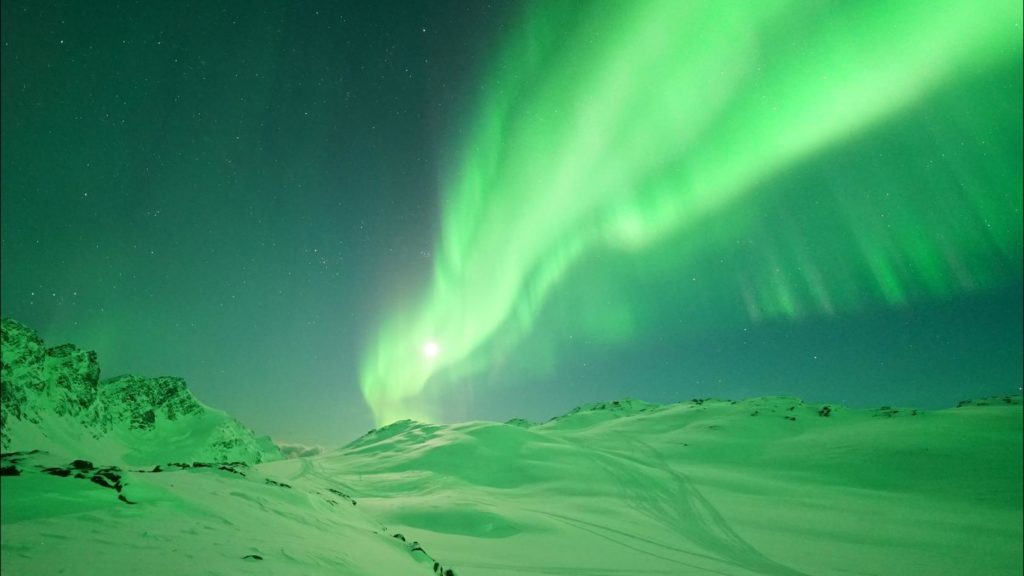
When You’re in Luck

I still haven’t been able to spend enough time under open skies to get a solid feel for what the aurora is going to do at these latitudes. Last week I made quick trips out Thursday and Saturday in response to promising solar wind conditions, but from Facebook posts I learned that the really good aurora was Friday evening while I wasn’t paying attention.
This weekend I wasn’t planning to go out, but an eager friend called me, excited about the aurora he was watching. I went outside to check and realized he had not seen active aurora yet. He suggested to go on a quick snowmobile trip, and though it wasn’t exactly what I should be doing the solar wind data looked good. Good enough for some activity that would surely make my friend even more excited, and a crescent moon pretty much guaranteed the ability to shoot some beautiful footage. I couldn’t pass it up, and off we went.
We stopped just a few miles out of town, went up a small hill and got my camera ready as the aurora started showing promising signs. As I started recording (video) it became obvious a substorm was underway.
During a substorm bright and active aurora starts to the south and then moves across the sky to the north, typically in 15 minutes or so. That means you start out having the camera facing south, and then at some point you better point it straight up (well, towards magnetic zenith, strictly speaking, which is almost straight up here) where the aurora may form a magnificent corona (rays appearing to emerge from magnetic zenith). When to move the camera is a tricky decision. Sometimes bright aurora jumps overhead suddenly and unexpected, and other times it gets stuck to the south and puts on a good display there before dimming and moving back south.
Then on the rare and lucky occasion it moves overhead, gets stuck, moves back south and then whips back across the sky again. In that case you may get active aurora overhead twice in less than an hour, whereas other nights you can wait all night and it just never happens. This was one of the lucky nights.
I don’t typically include audio on my videos because it doesn’t add to the footage. On the contrary, really, because the audio is poor – and often the comments are too. I’m making an exception here because even though the video looks great, it’s hard to convey just how jaw-dropping it is to witness a display like this live. The lens used captures a 114° field of view on a full frame (slightly less here because video doesn’t use the full sensor), meaning what you see here fills the human eye field of view (notice the Big Dipper).
As the aurora quieted down somewhat I figured I’d make a timelapse with the view towards the moon. Then the aurora flared back up, making for a technically poor shot as I didn’t expose correctly for the aurora at all. However, it does show something I love: How the landscape is lit up in green by the aurora.
My friend was excited indeed. Minutes before the second overhead video was captured he suggested to go home because his feet were freezing. Now he’ll be buying some warmer footwear.